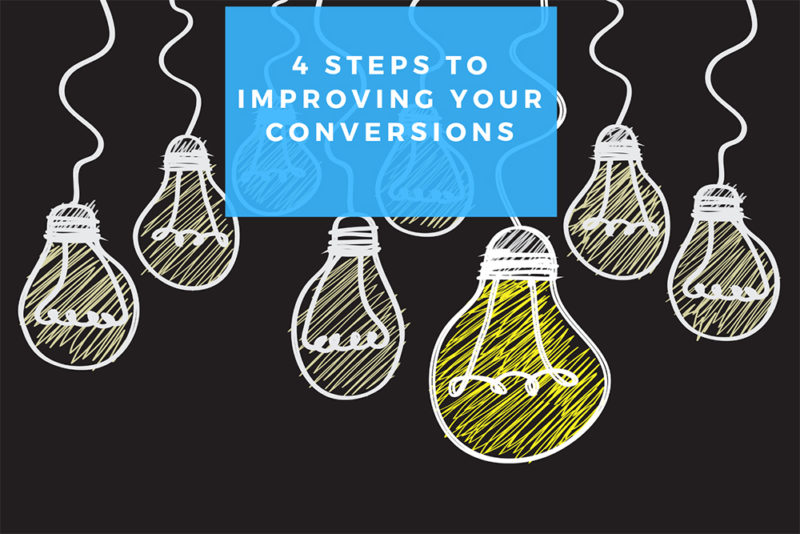How to Supercharge Your CRO Efforts
As a marketer, one of the most important aspects of your job is improving your website’s on-page conversions, and the best way to improve your on-page conversions is to invest in A/B testing. This tactic is simply testing one version of your website against another, comparing the results, and improving the look and functionality of your website.
Currently, 56% of marketers use A/B testing to improve conversions.
Even if you love the current iteration of your website, there’s always room to improve. Trends come and go, as do the tastes and preferences of your visitors. Dive into A/B testing and become a CRO superstar.
Invest in A/B Testing
Considering only 22% of businesses are happy with their conversion rates, your website could probably use an upgrade.
Every detail of your website can either make or break your conversion rates, including the location and message of your CTA, body copy, and the overall design of your website. Changing these and other elements can help you make the right impression on new and returning visitors to your website in order to convert more visitors into paying customers.
- The ABCs of A/B Testing
To improve your conversion rates, invest in A/B testing. To get started, first identify what element of your website you want to test, come up with a new variant for this element, then send 50% of your traffic to the new version of your website and 50% to your existing website. Compare the results, then roll out the winning version to make it a part of your website.
A/B testing allows you to test out new ideas before committing to a new version of your website. As you learn more about your visitors’ tastes and preferences, you can create the ideal browsing experience for your customers, increase sales, and boost your bottom line.
- Identify Your Conversion Goals
Before you start testing individual elements, you need to identify specific conversion goals for your campaign. Depending on the nature of your business, this may include having your visitors contact a customer support agent, buy one of your products, download an ebook, schedule an appointment, or just watch one of your videos.
Figuring out what you want your visitors to do once they’re on your website will help guide you through the A/B testing process. This also helps you determine whether or not the new version of your website is a success. If you see a boost in sales or more people downloading your ebook, consider rolling out the new version of your site.
- Split Testing vs. A/B Testing
Before we go any further, you also need to understand the difference between split testing and A/B testing.
Split testing means directing your visitors to two different URLs. The original version of your website will be hosted on one URL, while the variant or variants are hosted on another. This is usually reserved for large-scale changes to your website, such as a new user menu or a new website template.
A/B testing means using the same URL for both versions of your website. This is usually reserved for testing small, isolated elements of your website, such as the location of your CTA or the copy on your homepage.
- SEO and A/B Testing
Some marketers are wary of A/B testing, fearing it will impact their website’s search rankings. However, Google offers its own A/B testing platform, Google Optimize, which shows us that the company wants webmasters to test and improve their websites.
It’s also important to remember that A/B testing is not the same as content cloaking or duplicate content, two mistakes that can damage your search rankings. When Google crawls and indexes your website, it will only use one version of your website, exempting you from any penalty.
Test the Right Elements
For your campaign to be a success, you need to focus your efforts on the right elements of your website. If you’re new to A/B testing, you might not know where to start. If you feel like you’re flying blind, start with smaller elements like the location and message of your CTA, web copy, customer and user reviews, product descriptions, button colors, and photo and video placements.
To get a better sense of which elements you should test, track your visitors as they make their way through your website, namely where your visitors tend to leave your website.
If they click on your homepage and leave after just a few seconds, your homepage could use an upgrade. If some of your products aren’t as popular as others, consider testing your product descriptions. If your landing pages aren’t converting as many visitors as you may have hoped, experiment with the copy and your call-to-action (CTA). Are your customers abandoning their shopping carts? Test out a new payment process and compare the results.
Collect Feedback from Your Visitors
You can also collect feedback from your visitors to learn more about how they feel about your website. Conduct user surveys using input fields, pop-ups, and social media. You can ask questions such as, “What aspect of our website do you like the least?” or “How would you rate your experience using this feature?” or “Do you still have questions about this product or service?” Be specific with your questions and hone in on certain elements of your website so you don’t waste your time testing the wrong elements.
Collecting user feedback also helps you avoid certain A/B testing pitfalls, such as changing some of the most popular elements of your website.
Analyze the Results
Before you start testing, make sure you have a way to analyze the results. You should be able to track the number of visitors to each version of your website and how they respond to these changes. Keep your goals in mind when analyzing the results. Ideally, you should be able to look at your key performance indicators, or KPIs, as soon as you log onto your analytics platform.
Keep the size of your traffic in mind when analyzing the results. The smaller your traffic, the less meaningful the results will be.
Let your tests run their courses and commit to a reasonable timeline for your tests, such as one month or two weeks. If you stop testing too soon, you could end up with misleading results.
You also need to isolate the results of your tests to make sure you’re collecting data on each version of your website, otherwise the results may cancel each other out. For example, if the new version of your website sees a 5% boost in conversions, but the old version of your website has a slow month, raking a 5% decline in conversions, you’ll be left with a net gain of zero. Isolate the results to make sure your results are accurate.
A/B testing is an essential part of CRO. Some marketers get so used to the way their website looks that they forget to make improvements along the way. CRO tools, including common A/B testing platforms, tend to have an ROI of 223%, so it’s a smart investment for virtually any business.
Start the testing process today to improve your conversion rates.
If you still need help with CRO, sign up for a digital marketing convention to learn about the latest conversion tips and tricks.





